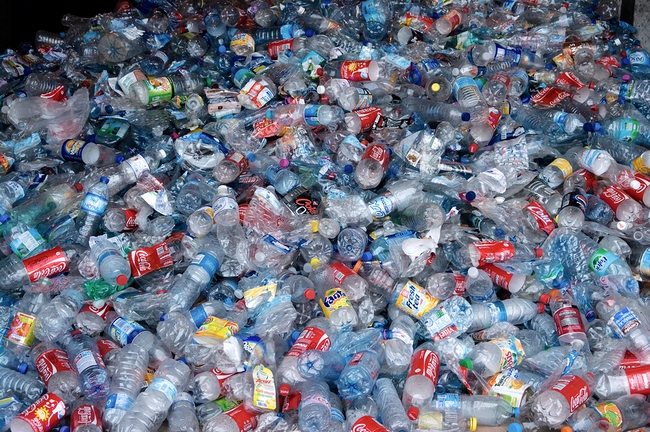- Make It Yourself Lavender Heart-Shaped Bath Bombs!
- 20 Things You Never Knew About “Down There”
- 12 Best Foods For Those Suffering From Arthritis Pain
- 12 Personal Hygiene Mistakes Almost Everyone Makes (Mom Never Told You About #4!)
- 15 Medicinal Plants And Herbs From The Cherokee People
- 12 Mind-Blowing Benefits Of Drinking Coconut Water During Pregnancy
- 12 Outstanding Winter Foods That Won’t Fatten You Up Like A Christmas Turkey
How to Live a Life Free From Toxic Plastics

Photo credit: bigstock.com
Do you think it’s possible to live a life free from toxic plastics? Or at least live a life with far less plastic? You might be surprised at how easy it is to live without it, especially once you get into the habit. For some people, some of the suggestions and ideas here might be next to impossible, but for many of us, we can not only live a life with a minimal amount of plastic in it, we can also reduce our plastic consumption when we can’t avoid it. Recycling, buying used rather than new, upcycling, or reusing the plastic things we can’t avoid (such as computers, laptops, and portable hard drives).
The following list isn’t meant to be overwhelming, nor is it meant to shame anyone who simply can’t do everything on it, this list is just a tool to help you find new ways and give you new ideas for avoiding plastics as much as possible. The life of our planet might depend on it one day. Take on as many of these ideas as you possibly can. Imagine what the world would be like if everyone did?
1. Don’t Become OCD About It
You will only drive yourself crazy if you become obsessed with eliminating plastic from every aspect of your life all at one time. By the way, you can tell your friends what you are doing, but don’t pressure them into doing the same or judge them if they don’t follow suit. Let your deeds, rather than lectures, be your strongest argument. Once your friends see what you are doing, they will more than likely begin to take up some of your habits.
2. Reuse/Recycle/Recreate
If you should get some new plastic into your life, have a plan for what to do with it. You might be able to recycle it. Most stores will allow you to return (so they can later recycle) that stash of plastic grocery bags. Save batteries and non-functioning electronics so they can be given to recycling programs when they are offered. (Most cities offer electronic recycling at least once per year) If you have an item with plastic that is still functional, see if you can sell it through EBay or Craigslist, or call a non-profit organization to see if they will accept it as a donation. Reuse that plastic until it can no longer function, and then try to recycle what is left. Avoid buying new items with plastic, things that contain plastic, or are wrapped in plastic, as much as possible.
3. Agree to Stop Using Stupid Plastic
Some of the plastic we use is just downright stupid when you think about it. A plastic Easter basket? Why not use one made from natural straw or wicker? A plastic drinking straw? Why not drink right from the glass? A plastic bag to hold a greeting card or a couple of cans of cat food? Just hold it in your hand, stick it in your pocket, or drop it in your purse if you forgot your shopping bag. Plastic “bones” for a Halloween decoration? Think twice before you buy or use stupid plastic.
4. Buy Natural Fibers
Look for rubber flip flops, rather than plastic. Buy leather or canvas shoes, rather than plastic. You might not be able to find underclothes that are completely free of plastic, but at least buy ones that are mostly made from natural fibers. It’s not that hard to find underwear made from 95 percent cotton. Buy your socks, underwear, t-shirts, and other items without plastic packaging if possible.
5. Avoid Plastic Pet Stuff
Your cat will use a plain old cardboard box for a litterbox, but you will end up needing new ones rather frequently. Buy a used cat box from a thrift store or garage sale. Use natural cat litters made from wheat. Some are even sold in paper bags, rather than plastic containers. Use glass, ceramic, or stainless steel bowls for your pet dishes. Choose pet toys or furniture made from natural materials, rather than plastic. Give your dog real bones to chew on (buy large enough pieces that they can’t break them, such as the knuckle bones from cows). Rather than expensive plastic toys, cats will play for hours with a cork.
Continue to Page 2
































